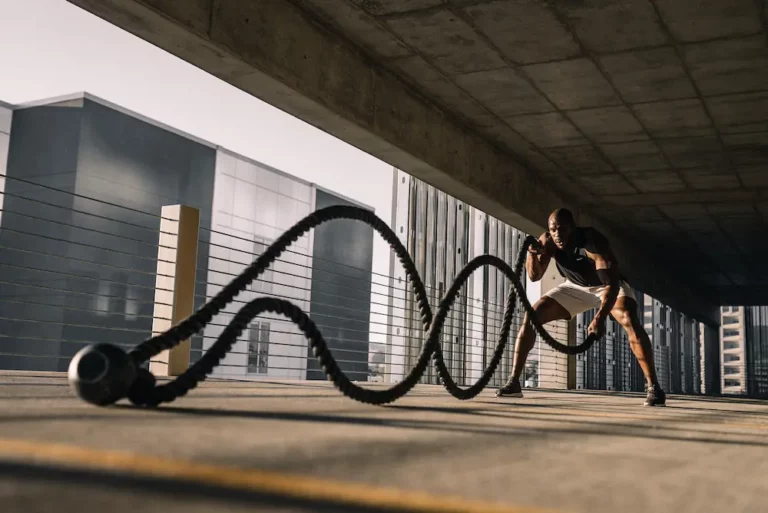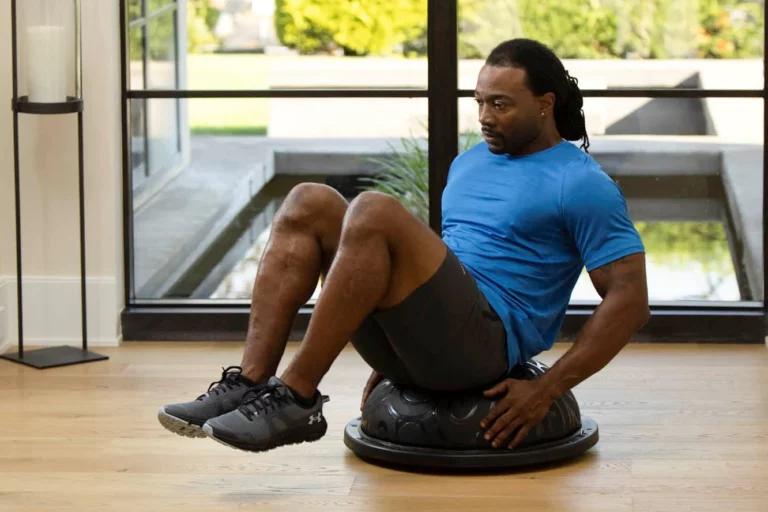Walking Backwards on Treadmill: Benefits and Technique
Walking on a treadmill is a common exercise for people who want to improve their cardiovascular health and burn calories. However, have you ever considered walking backwards on a treadmill? Walking backwards on a treadmill is a unique exercise that can provide several benefits to your body. In this article, I will explore the benefits of walking backwards on a treadmill and how to do it safely.
Walking backwards on a treadmill is also known as retro walking. It may seem strange at first, but this exercise can be a great way to switch up your workout routine. Not only does it work different muscles than forward walking, but it can also improve your balance and coordination. In this article, I will discuss the muscles that walking backwards on a treadmill targets and how it can benefit your overall fitness. Additionally, I will provide tips on how to safely perform this exercise to prevent injury.
Understanding the Concept of Walking Backwards on Treadmill
Walking backwards on a treadmill may seem counterintuitive, but it is a great way to add variety to your workout routine. This exercise involves walking backwards on a treadmill, which can help improve your balance, coordination, and overall fitness level. In this section, I will discuss the concept of walking backwards on a treadmill and its benefits.
When you walk forwards on a treadmill, you are engaging your quadriceps, hamstrings, calves, and glutes. However, when you walk backwards on a treadmill, you are engaging different muscles. Walking backwards can help strengthen your hip flexors, hamstrings, and glutes, which are often neglected in traditional forward walking. Additionally, walking backwards can improve your balance and coordination, as you have to pay more attention to your movements.
Walking backwards on a treadmill can also be a great cardiovascular workout. It can increase your heart rate and burn more calories than traditional forward walking. This exercise can help improve your endurance and stamina, making it a great addition to your workout routine.
It is important to note that walking backwards on a treadmill can be challenging, especially for beginners. It is important to start slowly and gradually increase your speed and duration. It is also important to maintain good posture and keep your eyes focused on the treadmill’s display screen or a fixed point in front of you to avoid losing your balance.
In conclusion, walking backwards on a treadmill is a great way to add variety to your workout routine and improve your overall fitness level. It engages different muscles, improves balance and coordination, and provides a great cardiovascular workout. However, it is important to start slowly and gradually increase your speed and duration to avoid injury.
Benefits of Walking Backwards on Treadmill
As someone who enjoys fitness and exercise, I am always looking for new ways to challenge myself and improve my overall health. One exercise that I have recently discovered and have been incorporating into my routine is walking backwards on a treadmill. Not only is it a fun and unique way to switch up my workout, but it also has several benefits.
Improves Balance and Coordination
Walking backwards on a treadmill requires a great deal of balance and coordination, as you are moving in a direction that is not natural to your body. By practicing this exercise, you can improve your balance and coordination, which can be especially beneficial for older adults or those with balance problems.
Strengthens Different Muscle Groups
Walking backwards on a treadmill also targets different muscle groups than walking forwards. While walking forwards primarily works your quads, hamstrings, and calves, walking backwards targets your glutes, hip flexors, and lower back muscles. This can help to improve overall lower body strength and muscle tone.
Enhances Cognitive Function
Finally, walking backward on a treadmill may also enhance cognitive function. Studies have shown that walking backward can improve spatial awareness and memory, as well as increase brain activity. This can be particularly beneficial for older adults or those looking to improve their overall cognitive health.
Overall, walking backward on a treadmill is a unique and effective exercise that can provide several benefits. By improving balance and coordination, strengthening different muscle groups, and enhancing cognitive function, this exercise can be a valuable addition to any fitness routine.
Safety Precautions to Consider
Walking backwards on a treadmill can be a beneficial exercise when done correctly, but it is important to take safety precautions to avoid injury. Here are some safety tips to consider:
Start Slow
When starting to walk backwards on a treadmill, it is important to start slow. Begin with a slow speed and gradually increase it as you become more comfortable. This will give your body time to adjust and help prevent falls.
Use Handrails
Using the handrails on the treadmill can help you maintain balance and prevent falls. Make sure to keep your hands on the handrails at all times, especially when first starting out or when increasing the speed.
Avoid Distractions
It is important to avoid distractions while walking backwards on a treadmill. Do not use your phone or watch TV while exercising, as this can cause you to lose focus and potentially fall. Keep your attention on your movements and the treadmill.
By following these safety precautions, you can safely and effectively incorporate walking backwards on a treadmill into your exercise routine. Remember to always listen to your body and stop exercising if you experience any pain or discomfort.
How to Incorporate Backward Walking in Your Treadmill Routine
If you’re looking to switch up your treadmill routine, walking backward might be a great addition. Here are two ways to incorporate backward walking into your treadmill routine:
Interval Training
One way to incorporate backward walking is by using it as part of your interval training. Here’s how:
- Start by walking forward on the treadmill for 3-5 minutes to warm up.
- Increase the speed to a moderate pace, and walk backward for 30 seconds.
- Turn around and walk forward for 30 seconds.
- Repeat this pattern for 10-15 minutes.
- Finish with a 3-5 minute cooldown by walking forward at a slower pace.
Interval training is a great way to burn calories and improve cardiovascular fitness. Incorporating backward walking into your intervals can help target different muscles and improve balance.
Incline Backward Walking
Another way to incorporate backward walking is by adding an incline. Here’s how:
- Start by walking forward on the treadmill with no incline for 3-5 minutes to warm up.
- Increase the incline to 5-10% and walk backward for 1-2 minutes.
- Turn around and walk forward for 1-2 minutes.
- Repeat this pattern for 10-15 minutes.
- Finish with a 3-5 minute cooldown by walking forward at a slower pace with no incline.
Incline backward walking is a great way to target your glutes, hamstrings, and calves. It also helps improve balance and posture.
Remember to start slowly and gradually increase the intensity and duration of your backward walking. Always listen to your body and stop if you experience any pain or discomfort.
Common Mistakes to Avoid
When walking backwards on a treadmill, there are a few common mistakes that people tend to make. To ensure that you get the most out of your workout and avoid any accidents or injuries, here are some things to keep in mind:
1. Not holding onto the handrails
One of the most important things to remember when walking backward on a treadmill is to hold onto the handrails. This will help you maintain your balance and prevent you from falling off the machine. However, it’s important to avoid gripping the handrails too tightly, as this can cause you to lean forward and put unnecessary strain on your back.
2. Walking too fast
Another mistake that people often make when walking backward on a treadmill is walking too fast. It’s important to start out slowly and gradually increase your speed as you become more comfortable with the movement. Walking too fast can also increase your risk of losing your balance and falling off the machine.
3. Focusing too much on the screen
While it’s important to keep an eye on the screen to monitor your speed and progress, it’s also important to pay attention to your body and how it’s feeling. Focusing too much on the screen can cause you to lose your balance or put unnecessary strain on your neck and shoulders.
It would be better to get an Apple Watch for your treadmill workout, as it will monitor your progress quicker and help you plan your fitness journey.
4. Not using proper form
Finally, it’s important to use proper form when walking backwards on a treadmill. This means keeping your shoulders back, your chest open, and your core engaged. It’s also important to avoid arching your back or leaning forward, as this can cause strain on your lower back and neck.
By avoiding these common mistakes, you can ensure that you get the most out of your workout and stay safe while walking backwards on a treadmill.
Conclusion
In summary, walking backwards on a treadmill is a unique exercise that offers several benefits. It can help tone different muscles, improve balance, boost heart rate, and reduce the impact on joints.
Research has also found that it can be used in physical therapy to improve gait and mobility in the lower extremities. By engaging more muscles and improving coordination and balance, walking backwards on a treadmill can be an effective workout variation for those looking to challenge themselves.
However, it is important to note that this exercise may not be suitable for everyone, especially those with existing knee or hip issues. It is always best to consult with a healthcare professional before incorporating any new exercise into your routine.
Overall, if you are looking for a fun and challenging way to switch up your treadmill workout, consider giving walking backwards a try. With proper form and safety precautions, it can be a great addition to your fitness routine.







